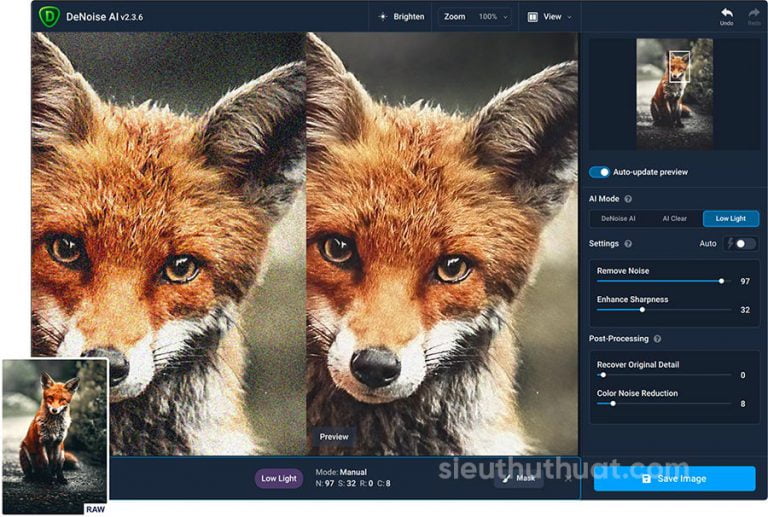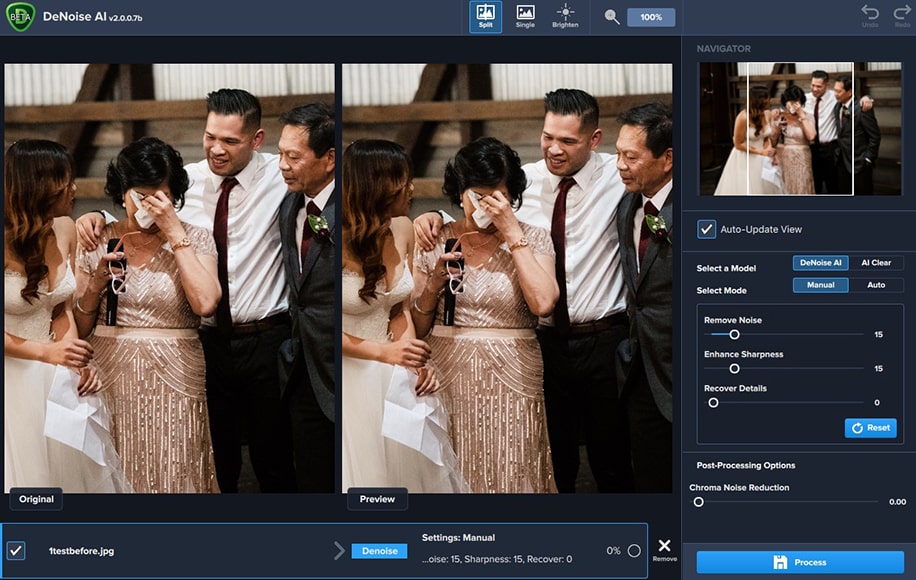


#Topaz denoise ai 3.3 series
I add color labels to images that are to become part of a panorama, exposure or focus blending series of images, teaching images, etc. And I add bulk and then specific metadata. It uses the power of Topaz's proprietary Artificial Intelligence engine to make sharper and clearer upscaled images than traditional upscaling tools. Note: Users on Ventura may need to go to Privacy & Security settings and allow DeNoise AI to run due to new Apple security measures. Subsequent passes may increase star ratings and usually add a few more images to the delete pile. Eliminate noise and restore crisp details in your images with the first noise reduction tool. I’ll delete all the images marked with an X and then make sure all remaining images have keywords, captions, and location information. Topaz DeNoise AI - Shoot anywhere in any light without reservation. I usually will do some image editing at this point, mostly in Lightroom but some will go to DeNoise AI and saved as tiff files.

Some will go to Photoshop for anything that can’t be done in Lightroom. edward.taylor-7975 (edward.taylor-7975) September 30, 2021, 12:56pm 27 Adding additional steps to the workflow was not a good idea when using this program as a plugin to LR Classic. But I usually don’t do a lot of image editing at this point. In Denoise 3.0.3 the corrections render fine in Topaz but after saving as a tiff the image has no changes back in Lightroom. Mostly I just want to get the images imported, culled, and add metadata and ratings. The last thing I do before I send the images off to their archiving home is to convert them to DNG (deleting the original raw files). The reasons I do this are that DNGs don’t need xmp sidecar files and they have a smaller file size than the raw files from the camera, in my case, Nikon NEF files. That workflow just got a kick in the pants with the latest version of Topaz DeNoise AI (3.3). Topaz has added a new noise reduction model to DeNoise AI called RAW. As the name implies, it works on RAW files that can then be saved as tiff, psd, jpg, png, or dng. The new RAW model works from the original raw sensor data. Not only does it do a great job on the noise, but it does an amazing job of clarifying and sharpening images at the same time. All using the raw sensor data from the camera. (And I thought I was thrilled with DeNoise AI before this new version.) You can then save the image as DNG if you wish to take the greatest advantage of the Lightroom Develop module or Camera Raw in Photoshop. See the comparison images below, in both images, the deNoise treated image is on the left (click on images to enlarge): Mountain detail. DeNoise AI 3.3 used for image on the left.


 0 kommentar(er)
0 kommentar(er)
